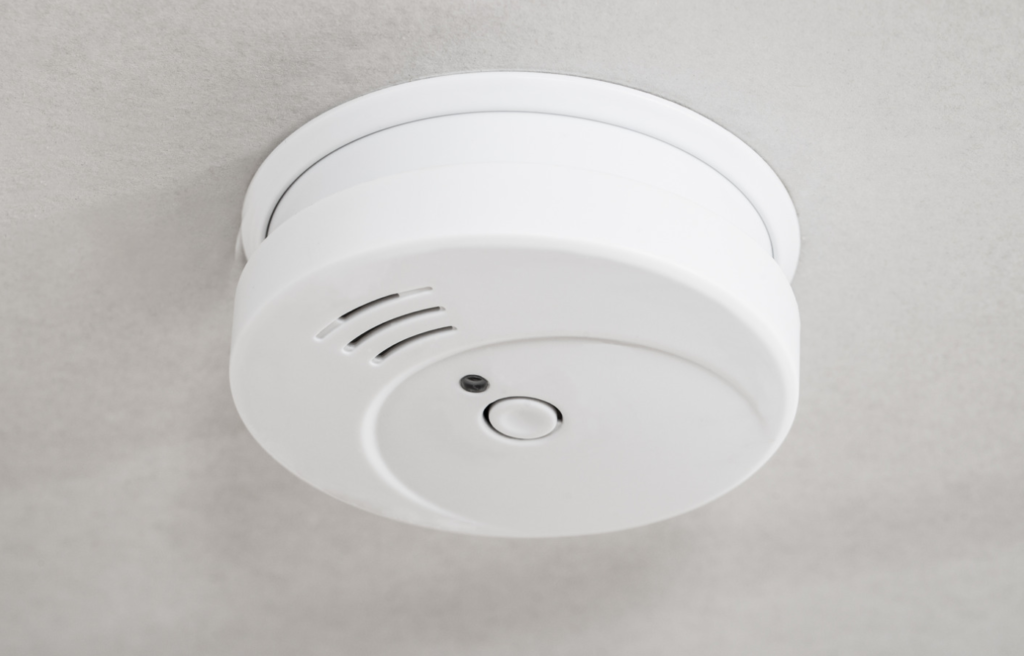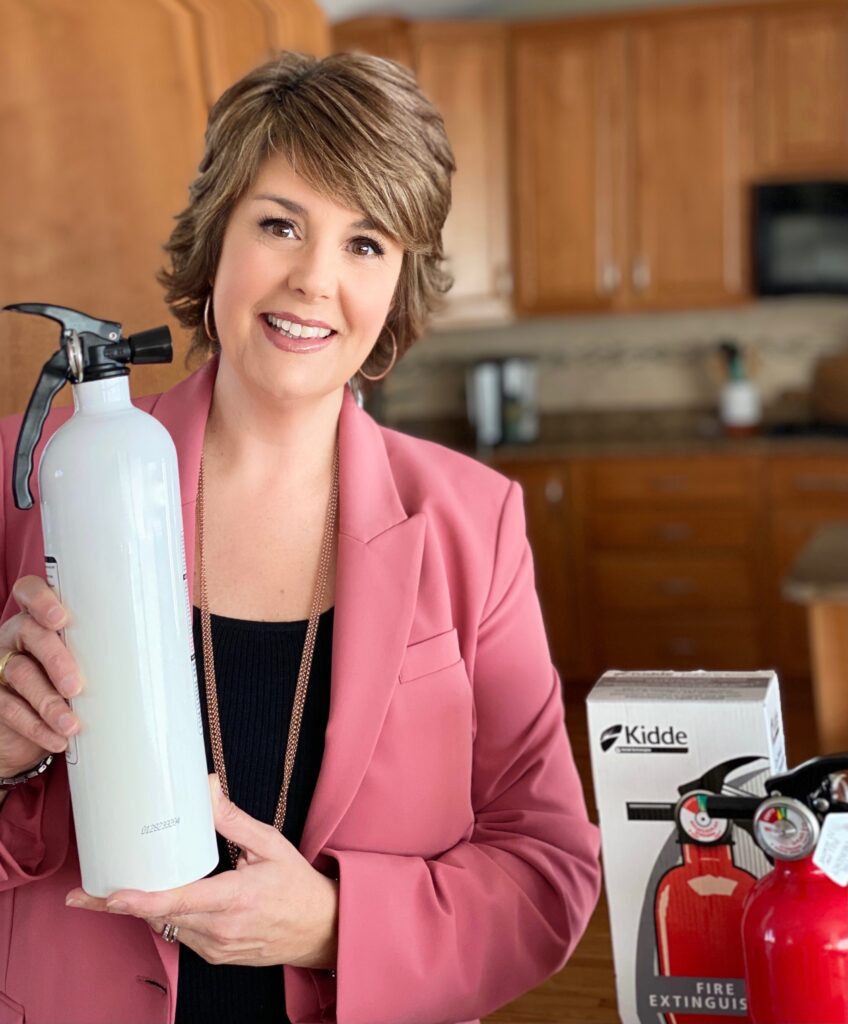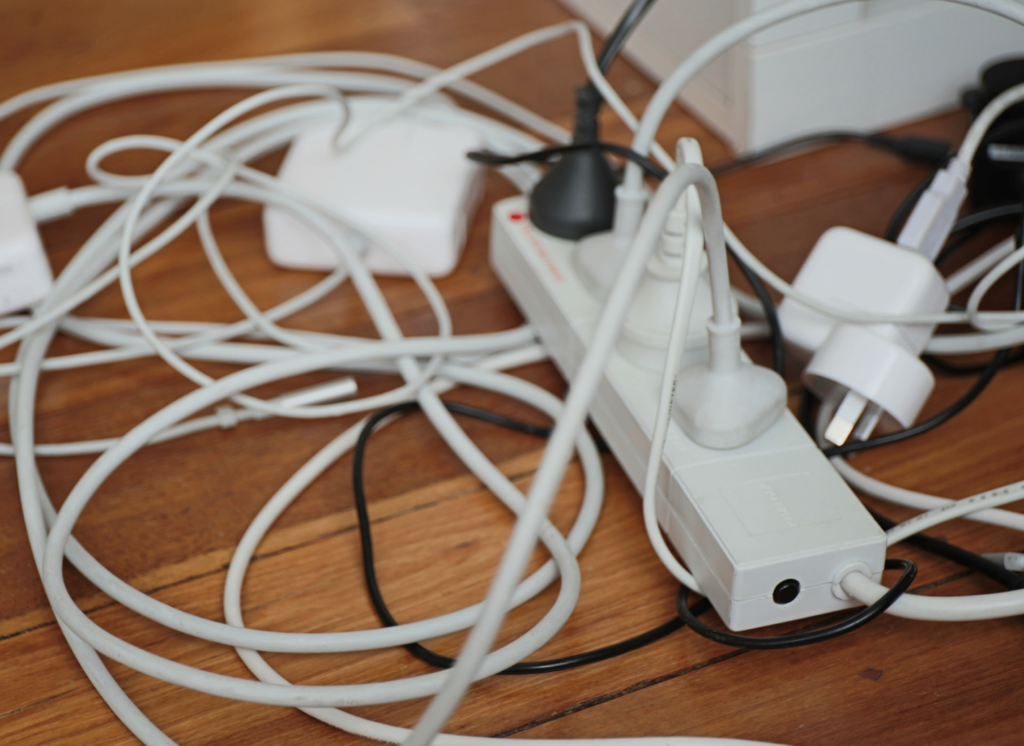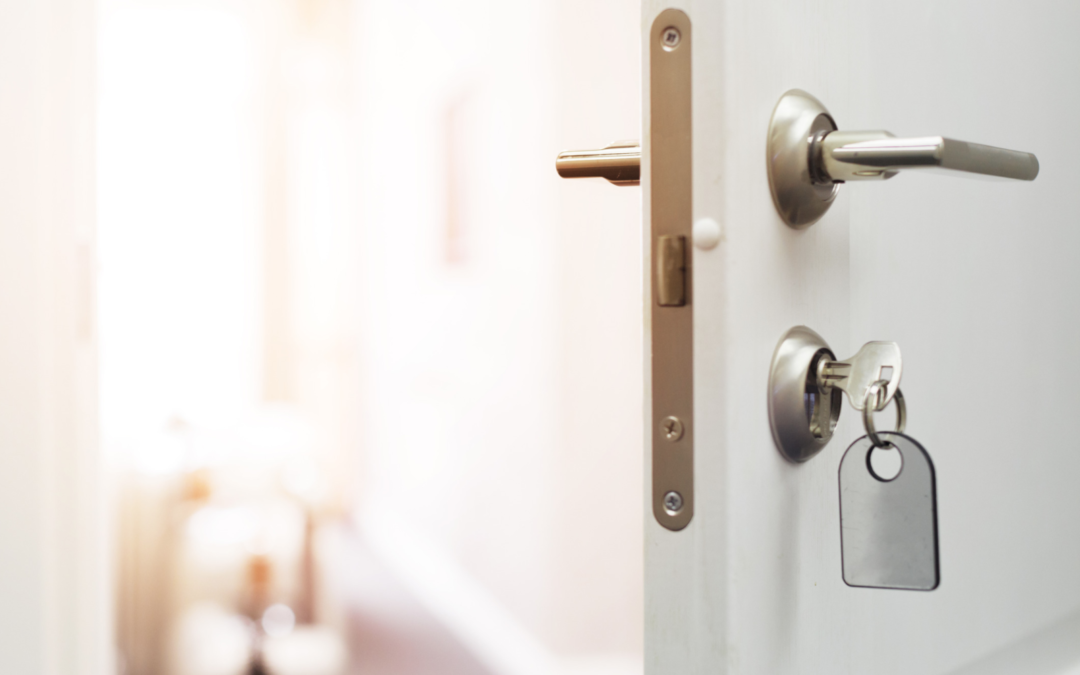When you’re out and about, taking proper safety measures is a given. You buckle your seatbelt in the car, look both ways before crossing the street and keep your dog on a leash to make sure they don’t run into the road.
But when it comes down to it, some of the best ways you can your family safe is by improving safety measures inside your home.
There are the obvious things… like making sure to lock your doors and changing the batteries in your smoke detector. But other home safety steps, like installing outdoor motion-detecting lights, might surprise you.
Here are some home safety measures you can take to bring you peace of mind inside your house.
Check Your Smoke and Carbon Monoxide Detectors
Installing, replacing, and changing the batteries in your home detectors is one of the best ways to ensure safety in your house.

Smoke Detector
If your batteries aren’t working, here are the quick steps you’ll want to follow:
- Remove the cover of your smoke detector.
- Replace the old batteries with brand new ones (make sure they still work!).
- Close the cover and snap the detector back in place.
- Test your detector by pressing the “test” button… listen for the chirp!
Here’s another fact that may surprise you. Smoke detectors only have a life of 10 years… so even if you keep swapping batteries, you’ll want to make sure your detector isn’t outdated.
To check if yours needs replacing, you can look at the manufacturing date on the back of the detector. If it’s been 10 years from the date on the unit, it’s a good time to install a new one!
Carbon Monoxide Detector
If you’re not super familiar with your home carbon monoxide detector, don’t fret! Testing one is very similar to testing a smoke alarm.
Simply hold down the “test” button until you hear a couple of beeps or an alarm. After you hear the sound, release your finger off of the button. If a sound does not occur, it’s time to replace those batteries. As a rule of thumb, it’s best to replace them every 6 months, and it’s best to test your detector every month.
While pressing the “test” button will tell you whether or not the detector is working, it will not reveal the accuracy of the device. To do this, obtain a bottle of CO (you can find this at hardware stores or online) and quickly spray the gas onto the detector. If an alarm sounds, you’re good to go!
This type of testing doesn’t need to be performed as often… once a year should work.
Find a Fire Extinguisher
None of us like to think about the possibility of a fire in our homes, but it’s better to be prepared for the worst than to ignore the chance that it may happen.

To make sure you’re prepared for a fire, it’s essential that you have a fire extinguisher in your home.
These days, they actually make fire extinguishers for multiple areas in your home—your living room, kitchen, and more. This makes them lighter and a little easier to manage in an emergency situation.
Here’s a tip: Write the date of the day you purchased the fire extinguisher on the side of the canister. Most extinguishers have a shelf life of 6 to 12 years, so if you find that you purchased yours over the shelf-life date, it’s time to buy a new one.
Finally, make sure you have at least one on every floor of your home!
Check Your Cords and Wires
Between your lamps, electronics, and household appliances, I’m sure you have a lot of wires lying around your home!
While having them lying around isn’t necessarily a bad thing, there are a few ways you can make sure that they don’t cause an issue in your home.

Check for frayed wires
With lots of wear, wires can become frayed. Make sure that the exterior coating is intact and that you can’t see the metal threads of the wires.
Don’t overload outlets
If you’re trying to be efficient, you might have one of those multi-socket adaptors. It’s okay to have a few things plugged in but make sure you don’t have more than one high-wattage appliance plugged into a single outlet.
Check the path of your cords
Long cords can be super helpful because they allow you to hook up your essentials all around your room. Just make sure that your cords don’t run under rugs or across doorways. Both of these pose safety and fire hazards.
Make A Basic Emergency Supply Kit
Grab a decent size box or bag and get to packing! You don’t need to go above and beyond, but creating a supply kit for your home can prove helpful in an emergency.

Here are a few items you can add to yours:
- Include a card with essential contact information such as numbers for the fire department, ambulance service, police department, poison control hotline, and your doctor.
- A basic first aid kit that has everything you’ll need to treat mild burns, cuts and scrapes, potential sprains, and more.
- Food and water. You should have one gallon per person per day for several days. If you don’t have room for a large supply, try to have a gallon on hand for each individual in your household. Snacks are also good to include! Include non-perishables that are nutrient dense.
- Flashlight (the crank ones are good to have on hand, too).
- Whistle or some way to alert others to signal for help).
- Duct tape, garbage bags, plastic ties, rubber bands, and other basic essentials.
- A battery-powered radio and local maps.
- Extra batteries and a few phone chargers (a backup battery charger is also helpful!).
- Matches and lighters.
- Any prescriptions or medications you’ll need for a few days.
Of course, you can tailor your kit to your personal needs. If you have a pet, pet food is good to include. Or if you don’t have important documents in the bank, you can add your insurance policies, IDs, records, birth certificates, and more.
Other Helpful Home Safety Measures
The list goes on… there are lots of ways you can increase the safety of your home! And while I can’t cover each one of them, here’s a list of some extra steps you can take to improve home safety:
- Install motion-detecting flood lights outside of your home to deter potential intruders.
- Consider purchasing a home security system that you can controll and access via your phone.
- Eliminate unnecessary clutter around your home as it may pose a fire hazard.
- Make sure your house number is visible from the street so emergency vehicles can easily find your home.
- Have your gas apliances, furnaces, and hot water heaters inspected regularly to ensure they’re up to par.
- Keep chemicals (in your home or garage) out of reach and locked up when not in use.
- Child-proof areas of your home like sharp corners, cabinets holding potentially dangerous items, pools/hot tubs, and more.
- Secure dressers and large, heavy furniture to the wall to avoid tipping.
- Buy an emergency window ladder for the upper levels of your home—practice using one in the event of a home fire.
- Consider adding textured surfaces to shower floors to avoid slipping.
- Come up with a faily emegency plan. Come up with scenarios (fire, tornado, power outage, etc.) and decide what each family member will do in the event of the emergency.
Whether you live in a new home or your inspecting the one you’ve lived in for years, I hope you’ll be able to implement some of these home safety tips into your own house.
From my home to yours,
Jill





